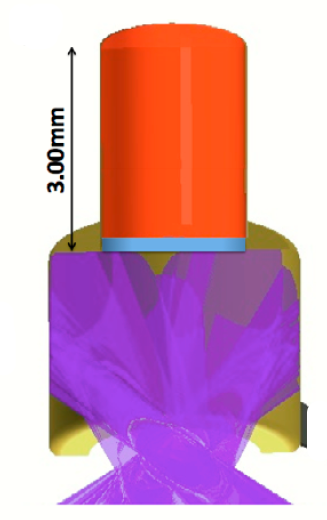HEDS Research Area
Hydrodynamics
- Home
- Research
- Research Areas
- Hydrodynamics
A key part of HED science at LLNL involves studying the behavior of fluids in motion. For example, we explore phenomena that occur in a moving fluid that absorbs and emits electromagnetic radiation, and in doing so, it modifies the fluid’s behavior—known as radiation hydrodynamics. Another focus of our research involves the role of hydrodynamic instabilities in fusion plasmas, which provide insight regarding our fusion science research, as well as our stockpile stewardship mission.
We conduct experiments designed to improve our understanding and control of hydrodynamic instabilities in HED settings, such as those that occur in inertial confinement fusion experiments at LLNL’s National Ignition Facility (NIF). NIF allows researchers to perform experiments in a controlled environment, where a problem can be picked apart and individual physics pieces can be studied. In addition, using NIF’s capabilities, researchers can perform detailed radiation-hydrodynamic experiments, as radiation transport is central to the operation of nuclear weapons.
Dive deeper into our research
Hydrodynamic Instabilities
LLNL scientists study hydrodynamic instabilities, such as instabilities that occur when two fluids or plasmas of different densities are accelerated together, with the lighter (lower density) fluid pushing and accelerating the heavier (higher density) fluid. These instabilities can degrade implosion performance during National Ignition Facility fusion experiments because they amplify target defects, as well as perturbations caused by tools used to inject fusion fuel into target capsules. Studying hydrodynamic instabilities that occur during implosions of target capsules provides insight regarding ways to enhance resistance to instabilities.
Hydrodynamic instabilities are also found when stellar explosions (supernovae) eject their core material, such as titanium, iron, and nickel, into interstellar space. The material penetrates through and outruns the outer envelopes of the lighter elements, such as silicon, oxygen, carbon, helium, and hydrogen. In addition, a unique regime of HED solid-state plastic flow and hydrodynamic instabilities can occur in the dynamics of planetary formation, and in asteroid and meteor impacts.
Learn More
- Researchers work to advance understanding of hydrodynamic instabilities
- Controlling hydrodynamic mixing in NIF implosions
- Experiments shed new light on supernova dynamics and hydrodynamic instabilities
Contact
- Dan Clark
- clark90 [at] llnl.gov (clark90[at]llnl[dot]gov )
Magneto-Hydrodynamics
The magnetic fields used during National Ignition Facility (NIF) experiments are 200 million times larger than the magnetic field on the surface of the Earth and 100 million times larger than the sun’s magnetic field strength. These magnetic fields are large enough to modify the path of electrons in plasma, which changes how heat is transported.
LLNL scientists study how these magneto-hydrodynamics effect the design of targets used during NIF experiments, as well as the growth of perturbations. In addition, the magnetic fields can change how the fuel cools down, which is a crucial process for achieving significant fusion reactions.
Learn More
- New research looks at process of magnetic flux generation in ICF implosions
- Research looks at entropy generation from hydrodynamic mixing in ICF experiments
Contact
- John Moody
- moody4 [at] llnl.gov (moody4[at]llnl[dot]gov )
Radiation Flow and Transport

At LLNL, we can create remarkable HED conditions in which the radiation field is so intense that it can be described as its own “fluid.” We can then study how radiation energy “flows” and propagates through plasmas.
This research enables scientists to better understand several astrophysics challenges, such as supernova explosions and radiation transport through star-forming regions. It also allows researchers to explore radiation transport in plasmas that are relevant to fusion science, such as radiation flow through foam media. In addition, LLNL scientists rely on data from hydrodynamic experiments to support the Laboratory’s stockpile stewardship mission.
Learn More
- Hydrodynamic experiments support stockpile stewardship
- Experiments illuminate supersonic radiation flow
Contact
- Alastair Moore
- moore212 [at] llnl.gov (moore212[at]llnl[dot]gov)







